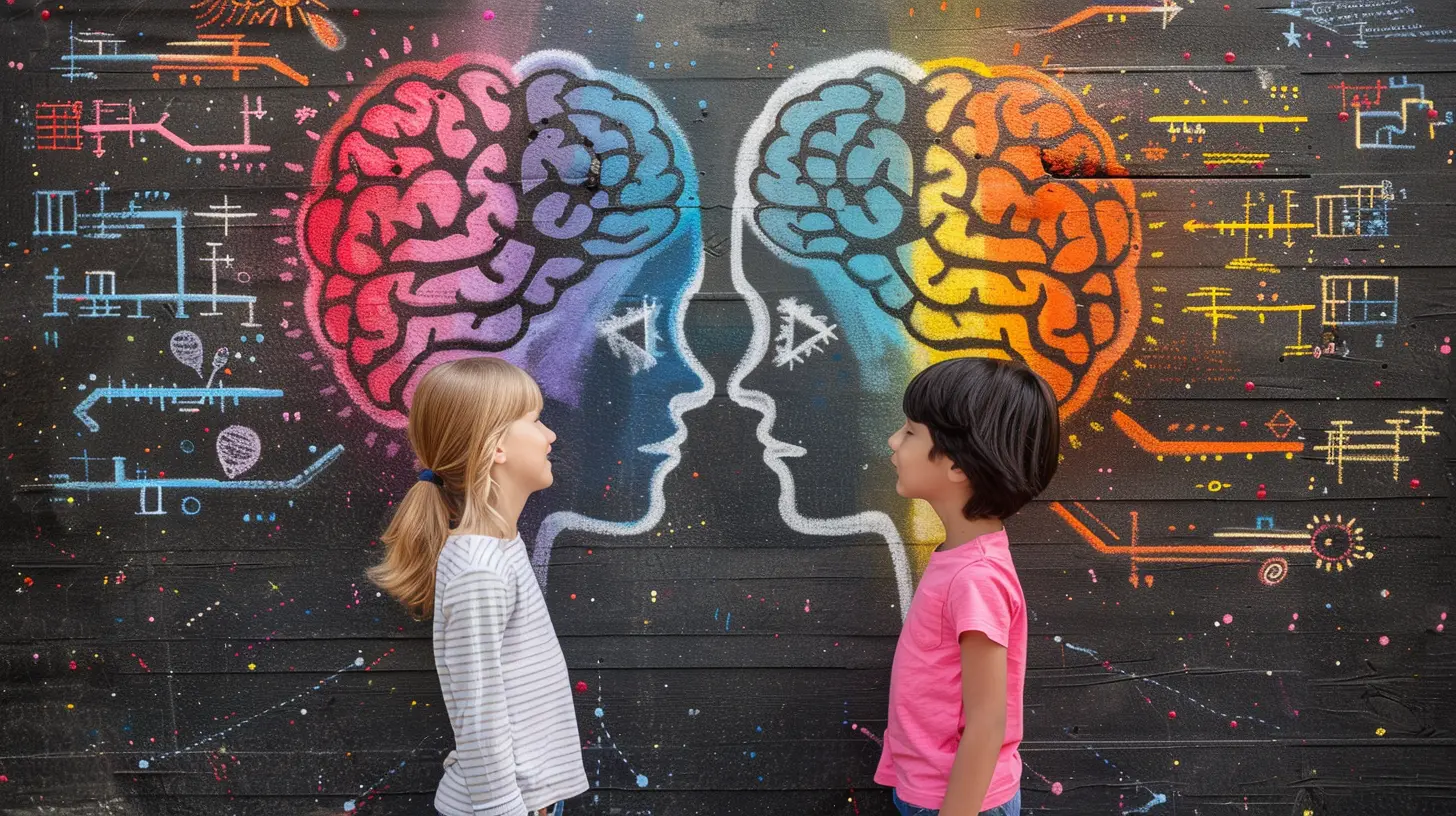"Transforming School Culture with Emotional Intelligence
9 September 2025
School isn’t just about books, tests, and grades. It’s a place where students learn life skills, build relationships, and grow into responsible individuals. But here’s the thing—none of this happens in isolation. The overall culture of a school significantly influences how students and teachers interact, how well they perform, and how they feel about their learning environment.
One game-changer in shaping a positive school culture? Emotional Intelligence (EI).
Emotional Intelligence isn’t just a buzzword—it’s a crucial skill that can completely transform how students, teachers, and administrators work together. But how exactly does emotional intelligence improve school culture? And more importantly, how can schools integrate it effectively?
Let’s dive in.

What is Emotional Intelligence?
Before we talk about its impact, let’s first define what emotional intelligence really means.Simply put, Emotional Intelligence (EI) is the ability to recognize, understand, and manage emotions—both your own and those of others. Psychologist Daniel Goleman popularized the concept and broke it down into five core components:
1. Self-Awareness – Understanding your own emotions and their impact.
2. Self-Regulation – Managing emotional reactions in healthy ways.
3. Motivation – Using emotions to drive positive actions.
4. Empathy – Understanding and acknowledging others’ emotions.
5. Social Skills – Building and maintaining strong relationships.
Now, imagine a school where students, teachers, and staff actively practice these skills. Sounds like a dream, right? The truth is, it’s absolutely possible.

Why Emotional Intelligence Matters in Schools
A school’s culture is shaped by the emotions and interactions of everyone in the building. When emotional intelligence is prioritized, several positive changes start to unfold.1. Stronger Teacher-Student Relationships
Teachers with high EI can connect with their students better. They recognize when a student is struggling emotionally and respond with empathy instead of frustration. This builds trust, making students more likely to engage in class and ask for help when needed.2. Reduced Conflicts Among Students
Schools are filled with social interactions, and let’s be honest—conflicts happen. Whether it's small disagreements or serious bullying issues, emotional intelligence helps students navigate their emotions and resolve conflicts in a healthier way.3. Improved Academic Performance
Believe it or not, emotions play a huge role in learning. When students feel safe, respected, and emotionally supported, they are more focused and motivated. A positive emotional climate leads to better concentration, memory retention, and overall academic success.4. A More Positive Learning Environment
A school filled with emotionally intelligent individuals fosters a supportive and inclusive atmosphere. Instead of a culture driven by stress and fear of failure, students experience motivation, cooperation, and encouragement.5. Better Teacher Collaboration and Well-Being
It’s not just students who benefit from emotional intelligence—teachers and staff do, too! A workplace culture built on emotional intelligence encourages teamwork, reduces burnout, and creates a healthier work environment.
How to Integrate Emotional Intelligence in Schools
Okay, so emotional intelligence is clearly important. But how do schools actually cultivate it? Here are some actionable ways to make it happen.1. Teach Emotional Intelligence as Part of the Curriculum
Why not treat EI like any other essential subject? Schools should incorporate lessons on self-awareness, empathy, and communication into daily learning. Simple activities like journaling emotions or discussing real-life scenarios can make a big difference.2. Encourage Open Conversations About Emotions
Let’s normalize talking about feelings. Encourage students to express emotions in a healthy way rather than bottling them up. Teachers can lead by example by openly discussing their own feelings in appropriate ways.3. Implement Social-Emotional Learning (SEL) Programs
Many schools worldwide are adopting Social-Emotional Learning (SEL) programs to help students build emotional intelligence skills. These programs provide structured lessons that teach kids how to manage emotions, develop empathy, and improve relationships.4. Train Teachers in Emotional Intelligence
Teachers are the backbone of any school, and their emotional intelligence directly impacts the learning environment. Offering professional development sessions on EI can equip educators with the tools they need to manage their own emotions and support students effectively.5. Create a Culture of Kindness and Respect
When kindness becomes the norm, school culture shifts for the better. Schools can encourage positive behavior through reward systems, acts of kindness challenges, and peer recognition programs.6. Use Mindfulness and Stress-Reduction Techniques
Mindfulness practices, such as deep breathing exercises or short meditation breaks, can help students and teachers regulate emotions. These stress-reducing techniques promote focus, emotional stability, and overall well-being.7. Encourage Collaborative Learning
Instead of focusing solely on competition, schools can promote teamwork and cooperation. Group activities, peer mentoring, and collaborative projects teach students how to work together, communicate effectively, and resolve conflicts.8. Address and Prevent Bullying with Emotional Intelligence
Bullying is often a result of poor emotional regulation and lack of empathy. By teaching students how to recognize and manage emotions, schools can significantly reduce bullying incidents. Anti-bullying programs that incorporate EI principles help create a safer school environment.
Real-Life Impact of Emotional Intelligence in Schools
The concept of emotional intelligence in education isn’t just theoretical—it has real, measurable results.Take, for example, a study conducted by CASEL (Collaborative for Academic, Social, and Emotional Learning). Schools that implemented SEL programs saw a 27% decrease in disciplinary actions and a 11% improvement in academic performance.
Another example is The RULER Approach, a SEL program developed by Yale University. Schools using this approach reported higher student engagement, fewer conflicts, and improved teacher well-being.
Clearly, investing in emotional intelligence isn’t just beneficial—it’s transformational.
Overcoming Challenges in Implementing EI in Schools
Of course, no change comes without challenges. Some common hurdles include:- Lack of Awareness – Many schools still don’t fully understand the importance of EI.
- Time Constraints – Teachers already have packed schedules, making it hard to add emotional intelligence lessons.
- Resistance to Change – Some educators and parents might see EI as “soft skills” rather than essential skills.
How to Overcome These Challenges?
1. Educate school leaders on the benefits and long-term impact of emotional intelligence.2. Integrate EI into existing subjects rather than adding extra workload.
3. Showcase real success stories to encourage buy-in from teachers and parents.
The Future of Emotional Intelligence in Schools
As education evolves, emotional intelligence is becoming more recognized as a critical life skill. Schools worldwide are beginning to integrate emotional intelligence into their systems, and the results are promising.Imagine a future where schools prioritize emotional well-being just as much as academic success. A future where students grow up with strong interpersonal skills, self-awareness, and emotional resilience.
It’s not just a dream—it’s a movement. And the more schools that embrace emotional intelligence, the stronger and more positive our education system will become.
Conclusion
Transforming school culture with emotional intelligence isn’t just a nice-to-have—it’s a must-have. From improving student relationships and academic performance to creating a more supportive work environment for teachers, the impact of EI is undeniable.Schools that invest in emotional intelligence aren’t just teaching students how to succeed academically; they’re equipping them with skills that will benefit them for a lifetime.
So, whether you’re an educator, a parent, or a school administrator, it’s time to advocate for emotional intelligence in schools. The future of education depends on it.
all images in this post were generated using AI tools
Category:
Emotional IntelligenceAuthor:

Eva Barker
Discussion
rate this article
1 comments
Zella Young
This article highlights the critical role of emotional intelligence in shaping school culture. By prioritizing empathy and awareness, educators can foster a more inclusive, supportive environment that ultimately enhances student learning and well-being.
September 22, 2025 at 10:26 AM

Eva Barker
Thank you for your insightful comment! I completely agree—emotional intelligence is vital for creating an inclusive and supportive school culture that benefits both students and educators.


